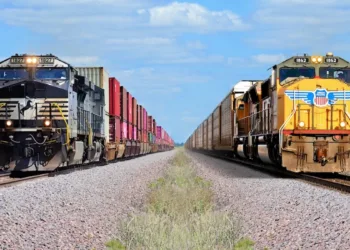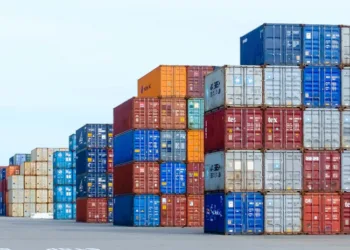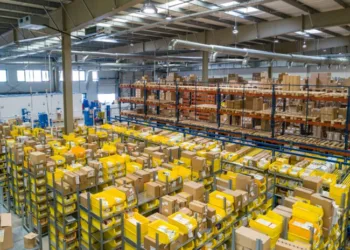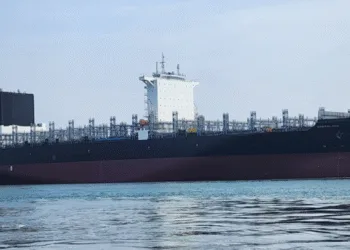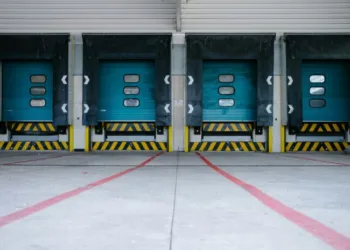Mette Frederiksen, head of research and insight at Tankers International, on the future of the VLCC trades.
The VLCC market is changing significantly. While the global fleet continues to grow with the introduction of newbuilds, the ageing vessels in operation are losing efficiency, therefore slowing the actual growth of tonnage supply. Adding to this shift is the rise of the “dark fleet,” where older ships, formerly considered impractical, are now finding extended employment in less regulated markets, often transporting crude from sanctioned nations. These developments pose challenges for the tanker industry, requiring a nuanced understanding of market dynamics.
Looking back: How VLCCs have traditionally operated
Historically, VLCCs would exit active trading at around 18-20 years of age. These older vessels would typically be scrapped or converted for storage and FPSO use. Just five years ago, it was the norm for tankers within this age bracket to be gradually phased out of the fleet, ensuring a consistent refresh of the global VLCC supply market. This cycle maintained a balance between supply and demand, ensuring that fleet growth was controlled, and market stability was preserved.
In the past, if vessels remained in the commercial space beyond the 20-year life span, this would often be for storage purposes or they would be ‘inactive’, if not directly scrapped. Nowadays, significant changes have taken place to impact this system. The main disruptor to this traditional cycle has been the emergence of new trading opportunities due to the current geopolitical shifts and sanctions. With a number of oil-producing nations facing export restrictions, older vessels have been given a second lease on life. These ships, which in previous years would have been scrapped, are now finding sustained employment in trades that are less concerned with vessel age, safety, and emissions standards.
Today, around two thirds of vessels in this older age category are actively trading, and this is predominantly within the sanctioned routes. Out of the vessels in this age bracket that are still trading, close to 90% of them are trading in sanctioned business – loading Russian, Iranian or Venezuelan oil. If their current sanctioned business fades, these vessels are unlikely to ever return to the mainstream tanker markets due to their tainted past, poor maintenance, and opaque ownership structure.
In addition to this, new vessel deliveries have slowed considerably, with only one new VLCC delivered last year and just five expected this year. The following year is set to see this number rise to around 30 deliveries. However, this remains below the historical annual average of 40. The underlying reason for this lag is uncertainty surrounding future and alternative fuel technologies. Shipowners have hesitated to commit to new orders as they await clarity on long-term fuel strategies, resulting in slower ordering.
An ageing population
While the average lifespan of a VLCC has extended beyond 20 years, a clear decline in efficiency is evident. Vessels under 13 years maintain consistent trade patterns, averaging just over five cargoes annually, as they remain acceptable to most charterers and terminals. However, beyond 13 years, increased restrictions shift older vessels towards shorter Middle East to Far East routes, paradoxically boosting voyage numbers to nearly six per year.
Beyond 18 years, efficiency rapidly deteriorates, with trading capacity dropping by approximately 10% annually as vessels face stricter limitations and a reduced number of charterers can fix them.
If we exclude sanctioned trading, utilisation in the VLCC fleet drops rapidly from the age of 18 to near zero by the time a vessel is 20 years old.
The impact of this inefficiency and current landscape of the VLCC market is significant. While the total VLCC fleet has increased by over 100 ships in the last five years, the true operational growth in terms of usable capacity is closer to just 60 vessels. Looking ahead, an anticipated 70 new VLCCs will enter the market within the next three years, translating to an 8% nominal capacity increase. However, due to the declining utilisation of older ships, the effective supply growth is projected to be only 1%.
This imbalance creates a market scenario where, despite an expanding fleet on paper, the effective number of vessels available for efficient trading remains tight, especially if we exclude sanctioned trade. This tightening supply has major implications for VLCC rates. As fewer vessels remain viable for mainstream crude transport, competition for available tonnage intensifies, leading to upward pressure on freight rates.
The future of the VLCC market
The current landscape presents a paradox: while the fleet is growing in number, the effective supply remains stagnant or in decline. With shipowner indecision and shipyard bottlenecks delaying the next wave of newbuilds, and older vessels struggling with efficiency losses, the VLCC market faces a prolonged period of supply tightness. To accurately understand the true state of the market, we need to look beyond just the nominal number of ships and consider factors like age, trading patterns, and operational efficiency.




